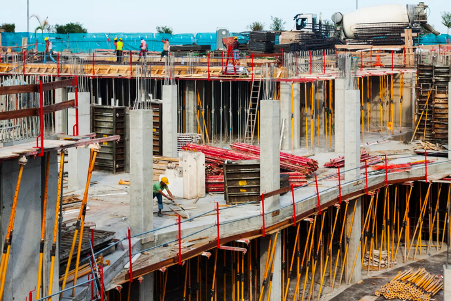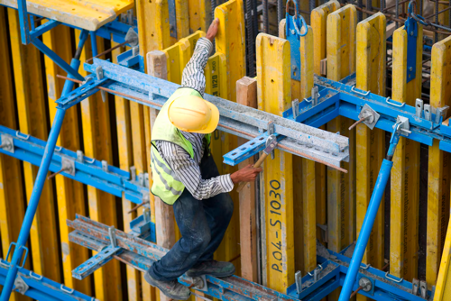Introduction
In Singapore’s thriving construction industry, foreign workers play a vital role in meeting the demands of large-scale projects. However, the foreign worker’s levy can impose a significant financial burden on construction companies.
To alleviate this strain and optimize cost management, it is essential to explore strategies for reducing the foreign worker’s levy without compromising the quality and efficiency of construction operations.
In this article, we will delve into five effective ways to achieve this objective, allowing construction firms like Aesperon Construction to optimize their workforce while staying competitive in the market.

- Embrace Technology and Automation
One of the most impactful methods to lower the foreign worker levy in Singapore’s construction sector is to adopt cutting-edge technology and automation.
By integrating advanced machinery and robotics into construction processes, companies can reduce their dependency on foreign labor. Technologies such as Building Information Modeling (BIM), drones for surveying, and 3D printing can enhance productivity and streamline operations, ultimately decreasing the need for a large workforce.
This leads to a reduced number of foreign workers, consequently lowering the levy burden.
Aesperon Construction can invest in comprehensive training programs for their local staff to handle these advanced technologies effectively, ensuring a seamless transition to a more automated construction approach.
- Implement Lean Construction Principles
Implementing lean construction principles is an effective way to optimize the workforce and minimize the number of foreign workers required.
By focusing on eliminating wasteful practices and improving efficiency, lean construction helps identify areas where the workforce can be utilized more effectively. This optimization leads to a decrease in the need for additional foreign labor, subsequently reducing the foreign worker’s levy.
Encouraging a culture of continuous improvement and empowering employees to propose efficiency-enhancing ideas can significantly contribute to Aesperon Construction’s efforts in adopting lean construction principles.
- Utilize Modular and Prefabricated Construction
Incorporating modular and prefabricated construction methods can significantly reduce the reliance on foreign workers in Singapore’s construction industry.
These approaches involve assembling various components off-site, resulting in reduced demand for labor-intensive tasks on the construction site. As a result, the number of foreign workers required decreases, leading to a substantial reduction in the foreign worker’s levy.
Aesperon Construction can explore partnerships with manufacturers of prefabricated components and incorporate these efficient techniques into their projects, driving down labor costs and enhancing project timelines.
- Invest in Workforce Training and Development
Investing in the training and development of the local workforce can be a long-term solution to lowering the foreign worker’s levy. By providing comprehensive training programs, upskilling opportunities, and career advancement paths, Aesperon Construction can enhance the skills and capabilities of its local workforce.
A highly skilled and competent local workforce can take on more responsibilities, reducing the reliance on foreign labor and subsequently lowering the foreign worker’s levy.
Additionally, offering attractive incentives and benefits to retain skilled employees can foster loyalty and create a stable and proficient workforce, positively impacting the company’s bottom line.
- Collaborate with the Singaporean Government
The Singaporean government actively supports efforts to reduce the reliance on foreign workers in the construction sector. Construction companies like Aesperon Construction can leverage this support by collaborating with relevant government agencies.
Engaging in dialogue and seeking guidance from organizations like the Building and Construction Authority (BCA) can help businesses understand available incentives and grants aimed at promoting workforce optimization.
By actively participating in government initiatives and adhering to industry regulations and policies, Aesperon Construction can demonstrate its commitment to optimizing the workforce and potentially benefit from reduced foreign worker levies.
Conclusion

In conclusion, lowering the foreign worker levy in Singapore’s construction sector requires a proactive and multi-faceted approach.
By embracing technology and automation, implementing lean construction principles, adopting modular and prefabricated methods, investing in workforce training, and collaborating with the Singaporean government, companies like Aesperon Construction can successfully reduce their levy burden while enhancing overall productivity and competitiveness.
A comprehensive and well-executed strategy will not only optimize costs but also contribute to the growth and sustainability of the construction industry in Singapore.







